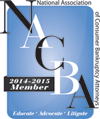Once you’ve decided to file bankruptcy it’s important to understand some “do’s and don’ts”. For example,
- Don’t use your credit cards anymore. The use of credit and cash advances before filing bankruptcy might be considered fraud and could delay filing.
- Don’t repay loans or debts to family members and friends. Preferring these “creditors” over others could result in them having to repay the money.
- Stop paying unsecured debts that will be discharged in the bankruptcy.
- Stay current on loans secured by property you want to keep, like your house and vehicle.
After we receive the completed packet and retainer we’ll get the paperwork prepared and schedule an appointment to meet and review it. If the fee has been paid in full and all the information provided we can file the bankruptcy shortly after this meeting. About 30 days following the filing of the bankruptcy schedules, you’ll meet with a trustee appointed to oversee the bankruptcy. Creditors are also allowed to attend these meetings but rarely do. At the meeting the trustee will ask questions about the paperwork and try to determine whether there is any property that’s not exempt and available to pay unsecured creditors. Your part of the meeting usually doesn’t take more than a few minutes.
About two months after this meeting a Chapter 7 bankruptcy will result in a discharge. In a Chapter 13 the proposed plan of repayment will likely be confirmed within two months. You’ll also need to take a second counseling session before your bankruptcy case can be discharged. Once your case has been closed we’ll send you a letter about next steps to making sure your fresh start is really achieved.


